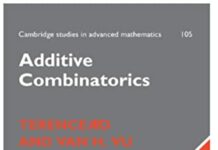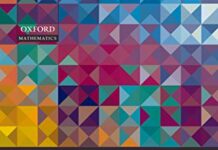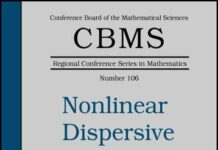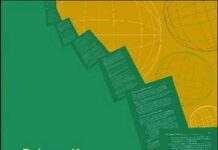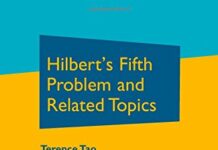
Ebook Info
- Published: 2016
- Number of pages:
- Format: PDF
- File Size: 2.52 MB
- Authors: Terence Tao
Description
This is part one of a two-volume book on real analysis and is intended for senior undergraduate students of mathematics who have already been exposed to calculus. The emphasis is on rigour and foundations of analysis. Beginning with the construction of the number systems and set theory, the book discusses the basics of analysis (limits, series, continuity, differentiation, Riemann integration), through to power series, several variable calculus and Fourier analysis, and then finally the Lebesgue integral. These are almost entirely set in the concrete setting of the real line and Euclidean spaces, although there is some material on abstract metric and topological spaces. The book also has appendices on mathematical logic and the decimal system. The entire text (omitting some less central topics) can be taught in two quarters of 25–30 lectures each. The course material is deeply intertwined with the exercises, as it is intended that the student actively learn the material (and practice thinking and writing rigorously) by proving several of the key results in the theory.
User’s Reviews
Reviews from Amazon users which were colected at the time this book was published on the website:
⭐This book is the best introduction to Real Analysis/Advanced Calculus that I have seen so far. Unlike the terse Baby Rudin (i.e. Principles of Mathematical Analysis by Rudin), this book has paragraphs upon paragraphs on the motivations behind definitions and concepts. And each next step is laid out naturally following the previous step; plus the steps are small enough for a beginner Mathematician to follow. Like Baby Rudin, this book is one of very few that I have seen which rigorously constructs the Number Systems – i.e. the natural numbers, the integers, the rationals and the reals – in that order. In that regard it surpasses Baby Rudin as the latter only contains the construction of the reals. Also while there are many exercises, the author makes sure to give copious hints on the harder ones. Again, this will be in great service to any beginner.
⭐Solid text.
⭐Most geniuses are bad at explaining things to commoners like me…not tao, well written — great clear concise explanations, find an enjoyable flow of reading not seen in most other text-style math books. BUT WARNING..even in 1st chapter , and ones that follow, too many references to book II, to make journey useful without owning both books. With 2nd book in hand (that is what I did), much better.
⭐Many of the pages in this text published by the Hindustani Book Agency have not been printed, or so poorly printed that large blank sections appear on the pages. Requests for replacement have been ignored. These printing errors make any sense of continuity impossible. I suggest buying the original Springer edition instead.Secondly, Tao departs from a long standing tradition by including the number 0 in the set of natural numbers. This is akin to allowing women reporters in men’s locker rooms: it creates a lot of confusion, especially if you are reading several Analysis texts at the same time. This approach also changes the frame of reference for number systems in general which I find disconcerting. I am not the only one to have a problem with this approach. Jay Cummings, in his own text on Analysis, states in a footnote on page 8 that “Note that 0 is not considered a natural number. I will defend this to my grave.” So will I.
⭐Imagine it’s a good book, but the shipping time is taking longer than expected.
⭐College book
⭐More comprehensible than the legendary baby rudin book.
⭐wunderbar
⭐5 star is a gross understatement of how good this book is. Comparable to the Feynman lectures on physics, the beauty of this book is the intuitive, extremely “human” explanation of almost everything a student might query or struggle with while still preserving the definition-lemma-theorem style as perhaps befits a modern textbook on pure maths. This is exactly how I wish I had been taught analysis at uni.I am using this book along with Rudin’s Principles of Mathematical Analysis to study/revise real analysis and I think it is a beautiful combination: This book to fill any gaps in your knowledge and to provided further explanation and Rudin’s for the sheer minimalist elegance and difficulty of exercises. Terry Tao himself used Rudin’s book in his classes on Real analysis but provided additional explanatory notes. This book and its companion volume, I believe, are an extension of those notes. This is not to say Tao’s book is any less beautiful but rather to say that the two work together like a charm.
⭐It was a present for my son. It is not really my thing, but he is crazy about physics and mathematics and he is very happy and pleased with it.
⭐A really nice book on analysis. The book reflects the author’s passion for mathematics. Easily it is one of the best introduction to real analysis (most probably the best). The book requires no prerequisite knowledge of the topic and develops the topic from scratch. A must have for any maths enthusiast/student. Rest you can judge after buying and reading the book itself, you will easily fall in love with the writting style of the book. I have attended the photo of index so that you can check it’s contents.
⭐If you are a beginner/intermediate and you really want to learn and understand Analysis you must go for this book. This book builds concepts from scratch! It will take you from a super beginner to an advanced analyst.Moreover, the transition from one chapter to othher is super smooth !! The real thing is, you must understand every word, definitions etc.. then you can easily master the subject.After reading both the volumes you can complement it with books like Rudin, T Apostol etc. to broaden your concepts and problem solving skills ( just some extra stuff )After all, the book is written by a master of Mathematics who explains everything at ” your ” level.
⭐Ottimo testo di Analisi reale che spiega i concetti e le loro connessioni e posto in una impalcatura oltre a presentare il debito sfilare di definizione- proposizione-corollario-lemma. Snello, con esempi e controesempi perfettamente mirati allo scopo didattico, pochi esercizi, nessun fronzolo o quasi. Didattico e accessibile nel senso che non moltiplica la difficoltà della materia con la cripticità ingiustificata o con la prolissità in buona fede che si trova in tanti testi didattici
⭐
Keywords
Free Download Analysis I: Third Edition (Texts and Readings in Mathematics Book 37) 3rd Edition in PDF format
Analysis I: Third Edition (Texts and Readings in Mathematics Book 37) 3rd Edition PDF Free Download
Download Analysis I: Third Edition (Texts and Readings in Mathematics Book 37) 3rd Edition 2016 PDF Free
Analysis I: Third Edition (Texts and Readings in Mathematics Book 37) 3rd Edition 2016 PDF Free Download
Download Analysis I: Third Edition (Texts and Readings in Mathematics Book 37) 3rd Edition PDF
Free Download Ebook Analysis I: Third Edition (Texts and Readings in Mathematics Book 37) 3rd Edition
